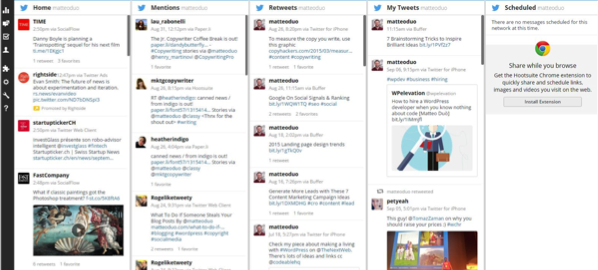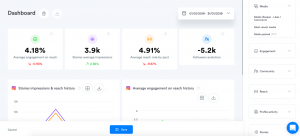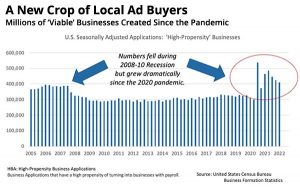
Ever wanted to work from a tropical beach in the Bahamas?
How about working from home and creating a steady income for your family?
If someone asked you this 20 years ago you would’ve said they were crazy. But with more than 2.4 billion people online, the internet represents the ideal marketplace for chasing those dreams.
I’m not saying you should quit your office job right now. But how about taking baby steps toward building an online business?
“But I don’t know anything about coding, design, and business!”
There are plenty of entrepreneurs who aren’t techies, but have developed successful online businesses. You can do the same, by following the steps in this blog post.
So, would you like to know what you need to start an online business today?
Step 1 – Pick a content management system

It all starts with your online home- your website.
Almost nobody creates a website from scratch because it simply takes too long. You can easily manage your website through what is called a Content Management System (CMS), a software that provides a friendlier way to update content, publish blog posts, create event pages and so on.
The most widespread CMS in the world is WordPress, which empowers 60+ million websites all over the world. Two of the main reasons it earned such a large adoption are the increasing number of available plugins (free and paid), and it’s huge, vibrant community filled with developers, designers and many WordPress advocates who can be great resources when you need help.
Step 2 – Make your website stand out

A theme is like the dress you will add to your “core engine”. And since we’re talking about WordPress, you’ll be overwhelmed by the number of results for a Google search such as WordPress themes.
So, before you start looking for a theme, clarify in your mind what the goal of your website will be:
- Will you sell goods?
- Will blogs be an important aspect?
- Will you feature content just for some of your users?
Don’t forget that the first impression plays a key role in the success of your online business. So don’t get over-excited by seeing the thousands of free themes and invest some money in having one that perfectly represents your business value.
If you don’t know how to code it yourself, consider outsourcing the customization of your WordPress theme to high-quality experts who can work their magic for you.
Step 3 – Build the 4 pillars of your online business

Once you have the “home” of your soon-to-be business ready, you should focus on creating the basic elements of an online business.
With this in mind, your next goal is to create the 4 pillars that will enable your business.
You’ll need:
- A homepage
- A landing page to collect email addresses
- A blog section
- A “showroom” page
Your homepage has to grab your target audience’s attention while providing a clear selling proposition, which is what you’re offering to them.
Landing pages are the perfect tool to collect email addresses and other information (like names, job titles etc.) from people interested in your offer.
A blog or “news” section helps you publish relevant content regularly to generate leads and rank on search engines like Google.
The “showroom” page is a page not about you, rather about people who support you or have bought a product or service from you. Testimonials, reviews, positive comments, and all that could reinforce the perceived value of your offer.
Step 4 – Turn your website into a selling machine with plugins

Since all the main pages of your website are now in place, you should focus on empowering your website with what it needs to become a selling machine.
Are you running an e-commerce store that sells goods? Are you selling subscriptions to a service? Maybe you are running a membership site?
You’re in luck because there are plenty of great WordPress plugins that can help you out with all the features you need.
Specifically, here are the top plugins for each selling type you could check out:
- Top plugin for selling digital products: Easy Digital Download
- Top plugins for e-commerce: WooCommerce and WP e-Commerce
- Top plugins for membership websites: Paid Memberships Pro and MemberPress
All these plugins provide incredible support to their customers, but if you need a little extra help – contact Codeable.
Step 5 – Set up an email list

Now that you’re able to sell to your website visitors (and accept payments), you should capitalize on your efforts. Everyone knows that publishing great content is a powerful way to attract new visitors to your website and rank better on Google. But that’s just the first step. To build a successful online business you have to create a mailing list.
MailChimp and AWeber are the most used services when talking about email marketing. Since the former is free up until 2000 subscribers, we recommend starting with that.
MailChimp has a huge, helpful, and clear documentation for how to get started.
The most important thing you should create at this stage is a page where your visitors can subscribe to your newsletter. These kind of pages, called landing pages, are crucial to any online business because they’re fully committed to turning traffic into leads.
Leverage the idea of giving away free stuff in exchange for someone’s email address.
If you have no idea where to start – put together your 3 most read blog posts, add a nice cover and some graphics and voilà you’ve got a free ebook for your subscribers.
Infographics, white papers, cheat sheets and checklists are the most common type of “freebies” you can easily provide your readers.
Step 6 – Manage your social media presence effectively

With so much new content published every second online, just hitting “publish” isn’t enough to get exposure for your online business. That’s where social media marketing steps in to bring your content to a wider audience that it wouldn’t normally reach.
Since you’re at the beginning of your business journey, you’re probably in charge of everything that your online business needs. Taking care of the social media can quickly become a long-hours activity you don’t have enough time to focus on.
Here are two powerful tools that will make your social media activities a breeze.
Buffer
Buffer helps you schedule social updates and links from your website or blog. This means you can optimize your time while providing social updates about your latest blog post or new product throughout the day.

If you want to know your followers’ most active hours on Twitter, just use Followerwonk and analyze your own followers. For Facebook, just look at your page’s insights and publish accordingly.
Hootsuite
Spreading your content and updates is just one piece of the puzzle when it comes to social media.
Another important part is to monitor relevant conversations about your business in real-time.
To do that, you should consider using a tool such as Hootsuite and its column-based interface.

Thanks to the ability to create separate columns, you’re able to keep track of mentions, replies, saved searches for relevant keywords to your business and also hashtags. To start using Hootsuite, just read this quick start guide.
Step 7 – Create unique visuals that will amaze your visitors
Written text is ok. But an image along with text is more powerful.
Our brain loves visual content, and it processes it way faster. For your message to be better understood and (hopefully) shared around more, include imagery with your blog posts and social updates.
Don’t worry, even if you aren’t a designer and haven’t worked with photo editing tools, you’ll be able to create some pretty cool imagery.
How?
Here are some great image creation tools;
Canva
With a huge library of free resources, like fonts, icons, layouts, symbols, photos and a pre-formatted canvas – you’ll love Canva.
Just pick one or more element from their library and you’ll be able to create a unique visual in minutes.
Placeit
With Placeit you simply upload your image or screenshot on one of the many available mock-ups and download your creation.
Find stock photos and edit them
Finding cool stock photos to use at no cost sounds like mission impossible – but it’s not.
There are a bunch of websites that aggregate the best high-resolution stock photos every day. One of the most interesting ones is Unsplash, from Crew. If you don’t like it, there are many more worth looking at.
Wrapping things up
Creating and growing an online business isn’t easier than creating any other “real life” business.
The key difference is it’s convenient. It’s way more affordable since you won’t need an office for quite some time. Most of the tools you use are free (or cost low monthly fees), and many of them offer trials so you can evaluate whether they’re a good investment or not.
So if you’re good at something and always wanted to create your own business, today is the day to take that first step because everything you’ll need to pave your future entrepreneurial path is in your hands.
No more excuses!
[Image credits: Memphis CVB]
[Image credits: David Goehring]
[Image credits: Jason Howie]
[Image credits: Heather]
[Image credits: Steven Depolo]
[Image credits: Phil Roeder]
[Image credits: 401k]
(83)
Report Post







